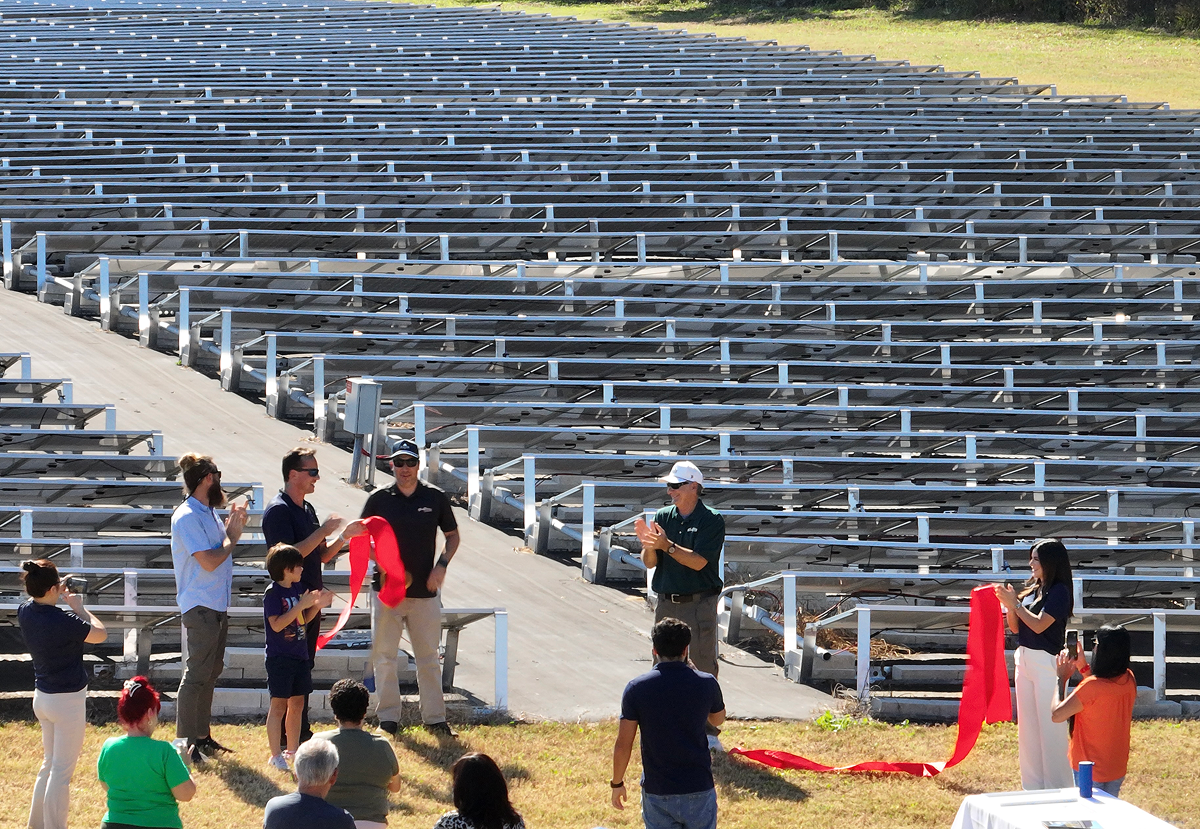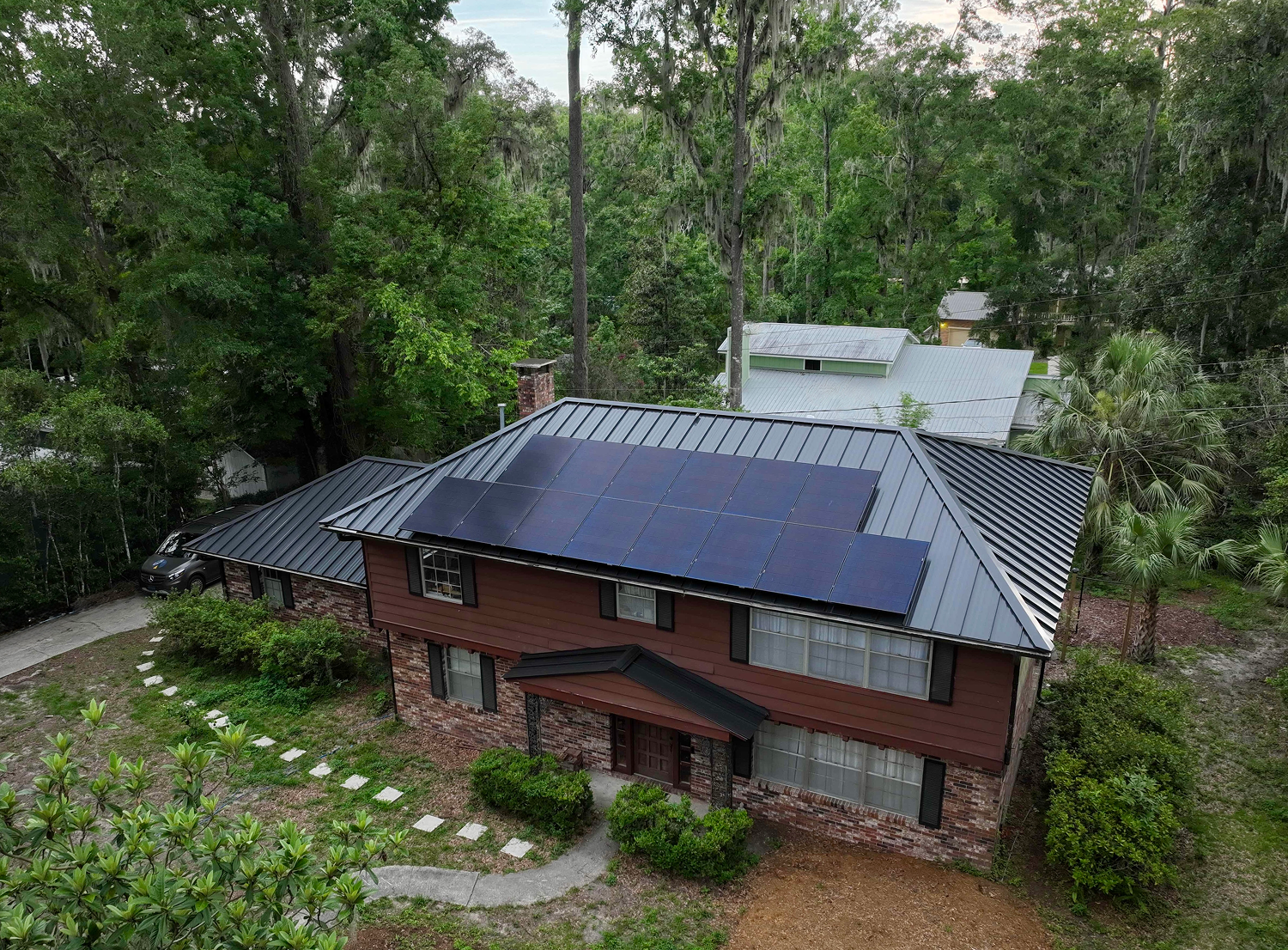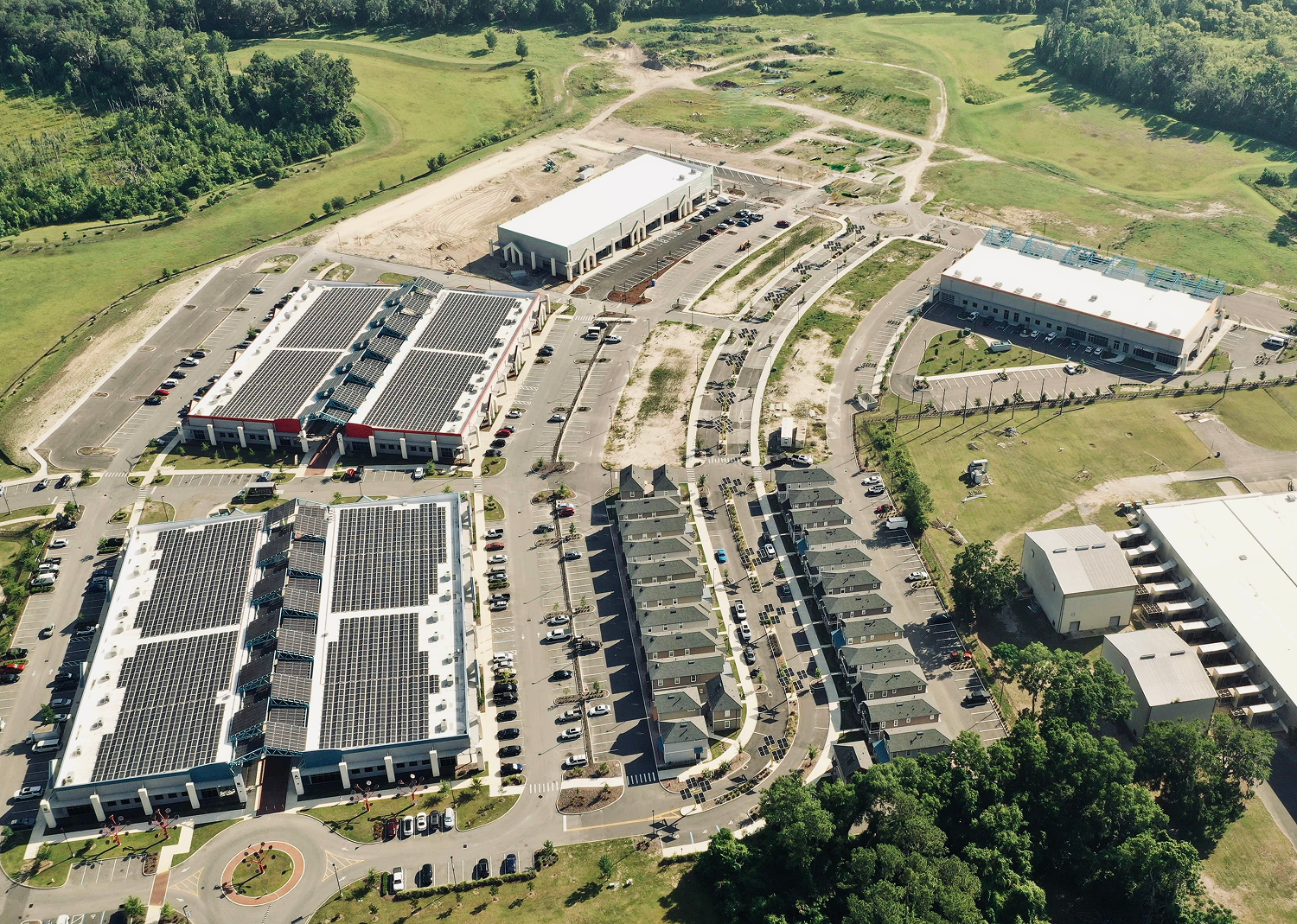Thinking about ordering solar panels before the year ends? The federal solar tax credit can still cover 30 percent of the project cost—but only if you meet the 2025 rules and deadlines. Whether you own a bungalow in Gainesville or manage a warehouse in Orlando, this credit can wipe out a chunk of next year’s tax bill as soon as the installation receives permission to operate.
The math adds up quickly: on a $28,000 residential array, the credit returns $8,400; a mid-size commercial rooftop can see six-figure relief. Because it lowers taxes dollar-for-dollar, the credit often pays back faster than any loan interest. And because Congress voted in July to end the residential credit after December 31, 2025, acting sooner rather than later is crucial—permitting backlogs and supply-chain delays could push projects past the finish line if you wait.
This guide breaks everything down: exact eligibility requirements for homeowners and businesses, a step-by-step calculation worksheet, filing instructions, and strategies to capture the credit before it disappears. Read on to confirm you qualify, avoid common disqualifiers, and maximize the savings your new solar system can deliver.
1. What the Federal Solar Tax Credit Covers in 2025
The federal solar tax credit—formally the Residential Clean Energy Credit (§25D)—remains a 30% write-off on qualified project costs when a homeowner-owned system is placed in service during 2025.
“Placed in service” means the system is fully installed and operational, usually confirmed by the final inspection or permission-to-operate (PTO) letter, not by the contract or payment date. Whether the panels are on a suburban roof, a barn in the Panhandle, or an off-grid cabin, the rule is the same: if the system is operational by 11:59 p.m. on December 31, 2025, you can claim the 30% credit on your 2025 tax return.
⚠️ Important Note: These rules apply only to residential homeowner systems. Commercial, nonprofit, and utility-scale projects fall under Section 48E and are subject to different deadlines—including safe harbor rules, a July 4, 2026 “start construction” deadline, and a December 31, 2027 “in service” requirement.
What counts as a qualified cost?
- Solar PV modules, micro-inverters, optimizers
- Racking, mounting rails, and balance-of-system wiring
- Labor, permitting, engineering, and inspection fees
- Sales tax and shipping
- Stand-alone batteries ≥ 3 kWh installed with or after the array
Add it all up, multiply by 0.30, and that dollar figure directly reduces your federal income tax owed next April.
A quick but critical nuance: if you receive a state or utility rebate that is excluded from federal income, you must subtract that rebate before calculating the credit. Incentives treated as taxable income do not shrink the federal basis.
Finally, July’s “Big Beautiful Bill” put a hard stop on the residential credit after 12/31/2025 with no gradual phase-down. The commercial ITC survives, but homeowners now have a true use-it-or-lose-it deadline.
1.1 A Brief Timeline of the Credit Through 2034
| Year | Residential Rate | Commercial Base Rate | Key Notes |
|---|---|---|---|
| 2022–2025 | 30% | 30% | IRA reset both to 30%. Residential credit ends Dec 31, 2025. |
| 2026 | ❌ (0%) | 30% | No residential credit. Commercial must begin construction by July 4, 2026 to lock in. |
| 2027 | ❌ (0%) | 30% | No residential credit. Commercial must begin construction by July 4, 2026, to lock in. |
| 2028–2032 | ❌ (0%) | n/a | Commercial ITC unavailable unless safe-harbored under 2026 rules. |
| 2033 | ❌ (0%) | ❌ (0%) | Step-down schedule eliminated — OBBB ends credits fully after deadlines. |
| 2034+ | ❌ (0%) | ❌ (0%) | No federal solar ITC remains. |
*Per Big Beautiful Bill (July 2025)
1.2 How the Credit Interacts With Battery Storage and EV Chargers
Starting in 2023, any stand-alone battery of at least 3 kWh—think Tesla Powerwall 3—earns the full 30 % credit even if the batteries are added to an existing solar array in 2025. Simply include the battery invoice and related labor in your total eligible basis.
EV chargers are covered under a different provision of the tax code, Section 30C, and are not included in the federal solar credit (§25D or §48E). Installing a home or commercial EV charger alongside your solar array will not interfere with claiming the solar credit, but the charger itself cannot be counted toward your 30% solar tax credit.
If you plan to claim both incentives, keep all documentation organized:
- Solar project costs should be clearly itemized on invoices for the §25D (residential) or §48E (commercial) solar credit.
- EV charger expenses should be documented separately for the §30C credit (up to 30% of eligible costs, subject to program caps and geographic requirements).
Because stacking incentives can get complex—especially when combining residential solar, batteries, and EV infrastructure—it’s best to consult a qualified tax professional to ensure compliance and maximize benefits.
2. Residential Eligibility Rules: Do You and Your System Qualify?
Before you pencil in a 30 % credit on Form 5695, be sure both you (the taxpayer) and your equipment satisfy the IRS checklist. The federal solar tax credit isn’t complicated, but a couple of easy-to-miss rules can knock you out of contention.
For 2025, a homeowner is generally eligible when all of the following boxes are ticked:
- You own the system outright. Paid with cash or a loan in your name; third-party leases and PPAs don’t count.
- Property type is eligible. Primary residence, vacation home, a manufactured home, houseboat, condo unit, or cooperative apartment all qualify.
- System is located on U.S. soil or territorial waters. Puerto Rico and other territories are fine.
- You have federal income tax liability. The credit is non-refundable but can roll forward up to five years.
- Equipment is new to you. New panels, inverters, and batteries qualify; used gear bought on eBay does not.
- Placed in service by December 31, 2025. Final inspection or utility PTO letter is your timestamp.
- Paper trail is intact. Keep paid invoices, manufacturer certificates, and the PTO letter with your tax records.
2.1 What Disqualifies a Homeowner
Even one misstep here can erase the credit:
- Leasing or signing a PPA. The installer (not you) owns the array and takes the credit.
- Claiming the same system twice. Exception: adding a qualifying 3 kWh+ battery lets you claim 30 % on the new battery cost only.
- Tiny or no federal tax bill. If liability won’t cover the credit within five years, the leftover portion evaporates.
- Missing the 2025 “placed-in-service” deadline. Contract date is irrelevant—IRS wants the PTO date.
- Skipping final inspection. A partially built system or “awaiting utility meter” status is insufficient proof of service.
Plan early, verify your tax situation, and lock in inspection dates to prevent these last-minute deal-breakers.
2.2 Special Cases: Multi-Family, Condo & Co-Op Residents
Shared rooftops don’t bar you from the federal solar tax credit, but math and paperwork get trickier:
- Condos & Co-Ops – The credit is split according to each owner’s out-of-pocket share or ownership percentage declared by the homeowners association. Record each owner’s contribution and have the HOA issue a statement.
- Two-to-Four-Unit Buildings – If you occupy one unit and install a common system, you can claim the credit on your personal return for the share serving your residence; the rest may qualify under business rules.
- Community Solar Buy-Ins – Only ownership stakes that deliver specific, metered energy to your home count. Subscription-based programs usually fail the “you own it” requirement.
- Houseboats & Manufactured Homes – Must meet HUD or Coast Guard habitation standards and be affixed with a unique address in the United States.
When in doubt, prorate costs based on kW allocation or square footage, keep meticulous receipts, and add a brief note with your tax return explaining the calculation.
3. Commercial & Nonprofit Eligibility: Section 48 ITC in 2025
Who can claim. Taxable businesses (C-corps, S-corps, LLCs/partnerships, sole proprietors) and tax-exempt entities (nonprofits, tribes, states/locals, public schools) owning eligible solar or storage. Tax-exempts may use elective pay (direct pay); taxable entities may use transferability (no transfers to specified foreign entities).
Credit value. 30% when prevailing wage & apprenticeship (PWA) rules are satisfied; otherwise the base rate is 6%. Domestic content (+10%) and energy community (+10%) adders may apply, subject to the same deadlines.
Which code section applies. For property placed in service in 2025 and later, the tech-neutral credit is §48E (legacy §48 generally applies only if construction began by 12/31/2024).
Deadlines (OBBB). Wind and solar qualify only if you begin construction by July 4, 2026 (safe harbor) or are placed in service by Dec 31, 2027. Miss both and no ITC applies.
Beginning-of-construction (new Treasury notice).
- For projects > 1.5 MW, starting after Sept 2, 2025 and before July 4, 2026, you must meet the Physical Work of a Significant Nature test (the 5% cost safe harbor is not available).
- Projects ≤ 1.5 MW may still rely on the 5% cost method in that window. All projects must satisfy continuity (in service within 4 years after the end of the start year, or continuous physical work).
Depreciation (updated). 100% bonus depreciation is restored permanently for qualifying property acquired and placed in service on/after Jan 20, 2025. For §48E property, the standard 5-year MACRS class remains in place; most taxpayers will expense 100% in year one. (Depreciable basis = cost minus 50% of the ITC.)
Direct pay & transfers. Tax-exempt owners can elect direct pay under §6417; taxable owners can transfer credits for cash under §6418 (subject to SFE transfer prohibitions)
3.1 Filing Differences for Businesses
Companies claim the ITC on Form 3468 and then flow the amount to the entity’s return (Form 1120, 1065, etc.). Partnerships and LLCs allocate the credit to members on Schedule K-1 according to ownership percentages. Keep a paper trail that would make an auditor smile:
- Stamped engineering drawings and signed interconnection agreements
- Itemized invoices showing labor vs. materials
- Cost-segregation schedules for carports or roof retrofits
- Certified payroll reports proving PWA compliance
3.2 Commercial Disqualifiers and Risk Flags
Watch these tripwires before penciling in the credit:
- Five-year recapture – Sell or shut down the system early and repay a pro-rated slice of the ITC.
- PWA violations – Missing apprentice hours or underpaying workers can slash the credit to 20 % of its intended value.
- Problematic financing – Sale-leasebacks executed more than 90 days after service, or ownership flips within five years, invite IRS scrutiny.
Plan structure, payroll, and exit strategy up front to keep the full Section 48 benefit intact.
4. Crunching the Numbers: How to Calculate Your 2025 Credit
Before you open Form 5695 or 3468, assemble a clean list of costs that count. The IRS lets you include:
- Solar panels, inverters, optimizers, racking, wiring
- Stand-alone or hybrid batteries ≥ 3 kWh
- Labor, permitting, engineering, inspection fees
- Sales tax, shipping/freight, crane rental
- Site work that exists only to support the array (e.g., carport steel, ground-mount trenching)
Structural roof replacements, landscaping, or main-panel upgrades done for other reasons stay off the sheet.
A step-by-step example
- Add all eligible line items
- Panels & inverter: $22,000
- Labor & permits: $8,000
- 15 kWh battery: $4,000
Total basis = $34,000
- Subtract any tax-exempt rebate
- Utility upfront rebate: $2,000
Adjusted basis = $32,000
- Utility upfront rebate: $2,000
- Multiply by
0.30Credit = $9,600
You’ll write that $9,600 on Form 5695, Line 15 and then transfer it to Schedule 3 of your 1040.
Quick-reference savings chart
| System Size | Typical Cost (Installed) | 30% ITC Credit | Net Cost |
|---|---|---|---|
| 5 kW | $16,550 | $4,965 | $11,585 |
| 10 kW | $33,100 | $9,930 | $23,170 |
| 15 kW | $44,850 | $13,455 | $31,395 |
*Your actual quote, especially with batteries or carport steel, may differ.
Handling other incentives
- State credits that are taxable do not reduce the federal basis.
- Grant or cash-out programs that are tax-exempt do shrink the basis dollar for dollar.
- Always do the subtraction before applying the 30 % multiplier.
Not enough tax liability?
The residential credit is non-refundable, but any unused portion carries forward up to five years. For example, if your 2025 tax bill is $5,000 and your credit is $8,400, you wipe out the full $5,000 this year and carry $3,400 into 2026.
Keep the receipts
Store paid invoices, PTO letter, and manufacturer certificates for at least five years. The IRS can ask for proof anytime within the recapture window.
4.1 Adding to an Existing System: Can You Claim Again?
Yes—if the new equipment is placed in service in 2025:
- Battery retrofit: A 13.5 kWh Powerwall installed on a 2022 array still qualifies at 30 % of the battery plus installation cost.
- Panel expansion: Adding extra modules or a second inverter lets you claim 30 % on those new items only; document the split invoice.
- Roof repairs: Only the portion structurally required for the new panels (e.g., additional rafters) is eligible; shingles for aesthetics are out.
Track costs in separate columns and attach a short explanation to your tax file. Clear records today prevent headaches tomorrow.
5. How to Claim the Credit on Your 2025 Federal Return
Filing the federal solar tax credit is mostly a data-entry exercise—as long as you have your numbers and paperwork lined up. Homeowners use Form 5695, businesses use Form 3468, and both feed into the main return you submit by April 15, 2026 (or October 15 with an extension).
- Pull your eligible cost total from the worksheet in Section 4.
- Open Form 5695 (or 3468) and enter that figure on Line 1.
- Multiply by
0.30; place the result on Line 15. - Transfer the amount to Schedule 3, Line 5 and finally to Form 1040, Line 20 (corporations flow through their respective lines on Form 1120, 1065, etc.).
Keep—but do not mail—the following documents:
- Paid final invoice marked “paid in full”
- Manufacturer Certification Statements (often one page per brand)
- Building permit or utility PTO letter showing the 2025 service date
- Net-metering agreement or interconnection approval
Most consumer tax software (TurboTax, H&R Block, Free File) prompts for solar data under “Home Energy Credits.” Double-check that the program places the credit on Schedule 3; some early-season builds miss this step.
Need to fix timing? If your installer finished sooner than expected and you erroneously claimed the credit in 2026, submit Form 1040-X to shift it back to 2025.
5.1 How the Credit Works If You Don’t Owe Enough Tax
The credit is non-refundable: it can reduce your tax bill to $0 but cannot create a negative tax balance. Any unused portion carries forward up to five years. Example:
- 2025 tax liability: $6,000
- Solar credit: $8,400
- 2025 return wipes out the $6,000, and the remaining $2,400 rolls to 2026.
Strategies to avoid wasting credit:
- Adjust W-2 withholding downward for the rest of 2025.
- Convert a slice of a traditional IRA to a Roth.
- Realize long-term capital gains you were already planning to harvest.
5.2 Avoiding IRS Red Flags and Ensuring Smooth Processing
- Match dates: The PTO or inspection must show a 2025 date; contract signatures don’t count.
- Don’t inflate costs: Report the exact amounts on your invoices—the IRS benchmarks average $/W pricing by region.
- Leased equipment = zero credit: The agency cross-checks EINs of major leasing firms.
- Keep records five years: That aligns with the ITC recapture period; auditors often ask for proof in year four.
Follow these basics, and claiming your 30 % slice should be as painless as the flip of a breaker on install day.
6. Frequently Asked Questions & Real-World Scenarios
Below are rapid-fire answers to the issues our design team hears every week. Use them as a quick gut-check before you call your accountant.
- How does the 30 % federal solar tax credit actually reduce my tax bill?
It’s a dollar-for-dollar credit, not a deduction. Owe $7,000 in federal income tax and earn a $6,000 credit? Your new tax due is $1,000. - Is the 30 % residential credit really going away?
Yes. The July 2025 legislation sunsets the §25D credit at midnight on 12/31/2025 with no phase-down or safe-harbor. - My installer says completion may slip to January 2026—what then?
If the system isn’t placed in service in 2025, homeowners lose the credit. The “5 % safe-harbor” applies only to commercial ITC projects. - Can renters claim the credit?
Only if you own the solar equipment and have landlord permission to mount it. Typical renters using community-solar subscriptions don’t qualify. - How does the IRS verify my claim?
They can request invoices, proof of payment, and the utility’s permission-to-operate letter. Keep records for at least five years. - Does the credit apply to an off-grid cabin?
Yes—location in the United States and compliance with the eligibility checklist are what matter, not grid connection. - Will net-metering payments affect my credit?
No. The ITC is based on installation cost, independent of any monthly savings you earn from surplus power exports.
6.1 Troubleshooting Common Filing Mistakes
Most rejected claims trace back to three errors: entering the contract date instead of the PTO date, claiming leased equipment, or forgetting to subtract tax-exempt rebates from the basis. Double-check those lines on Form 5695/3468, and you’ll be fine.
7. Looking Beyond 2025: Planning Strategies Before the Sunset
With the Residential Clean Energy Credit scheduled to disappear at midnight on December 31, 2025, delaying could forfeit a full 30 % federal solar tax credit. Permitting queues in many Florida counties already run 8–12 weeks; add supply-chain hiccups, holiday staffing gaps, and utility sign-off, and projects that start after Labor Day may not hit the switch in time.
Remember, homeowners enjoy no “begun-construction” safe harbor—the array must be inspected and producing power in 2025. Commercial owners keep the 30 % ITC beyond 2025, yet tightening prevailing-wage, apprenticeship, and domestic-content rules can erode margins, making an early start attractive even for businesses.
Action checklist to stay ahead of the sunset:
- Request multiple quotes now. Competitive pricing and component availability favor early shoppers.
- Lock a signed contract and deposit. This reserves labor slots and secures today’s panel prices.
- Arrange financing immediately. Loan underwriting can add weeks.
- Track permitting weekly. Follow up with your city and utility to keep paperwork moving.
- Monitor congressional chatter. Extensions are possible, but history says don’t gamble—act on current law.
Ready to Go Solar and Claim Your 30 % Savings?
The playbook is simple:
- Own the equipment. Buy your panels, inverter, and (optional) battery outright or with a loan in your name.
- Flip the switch in 2025. Your system has to be placed in service—inspected, energized, and ready to generate—before the clock strikes midnight on December 31.
- Keep the receipts. Save every invoice, permit, and the PTO letter so you can confidently complete IRS Form 5695 (homeowners) or 3468 (businesses) next April.
Do that and the 30 % federal solar tax credit can slice thousands off your 2025 tax bill in one shot.
Waiting risks missing the deadline altogether, especially with permitting queues already stretching months. If you’re serious about locking in today’s incentive, reach out to the PPM Solar team for a free, no-pressure quote and personalized timeline. Let’s make sure the sun—and the IRS—work in your favor while the window is still open.



